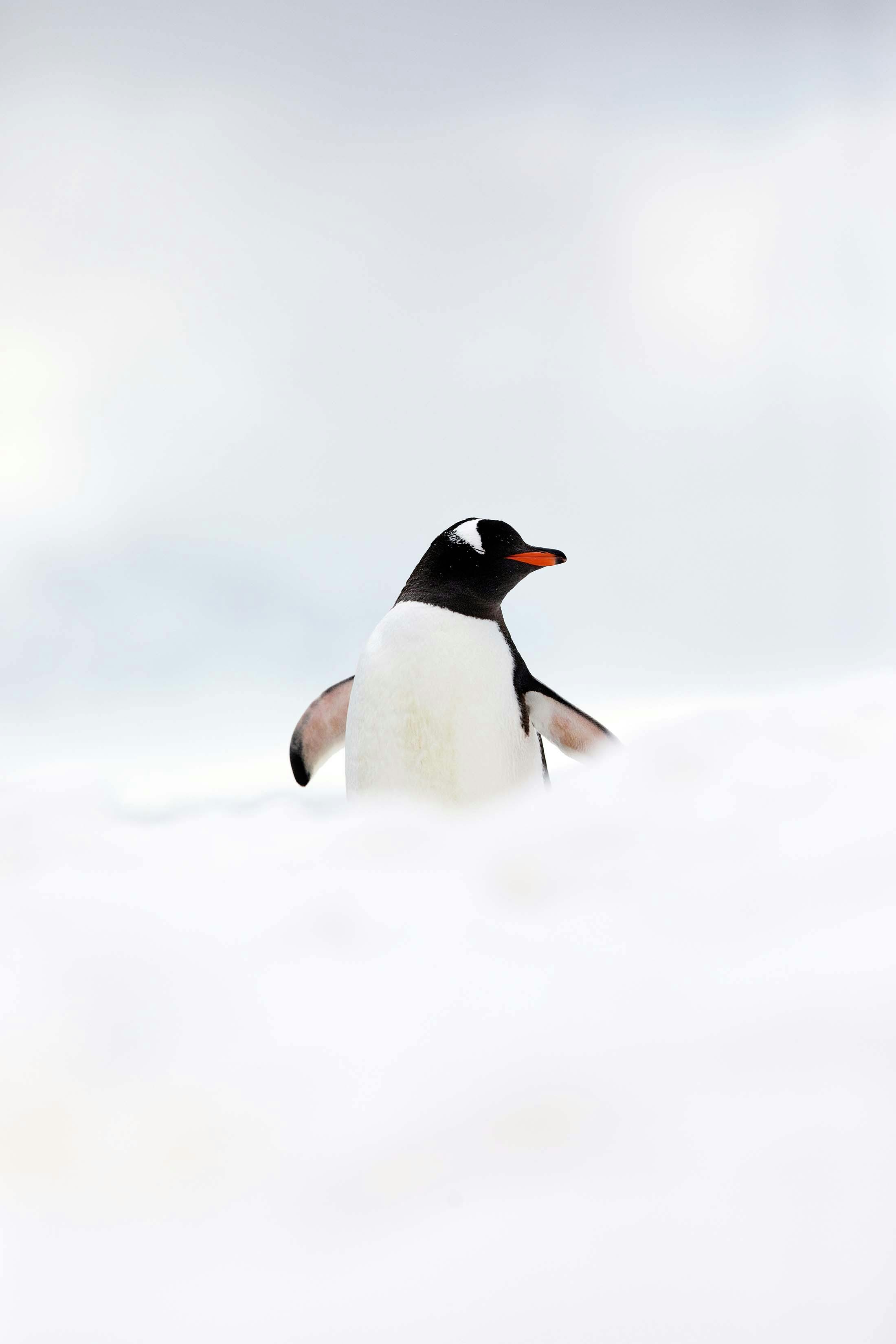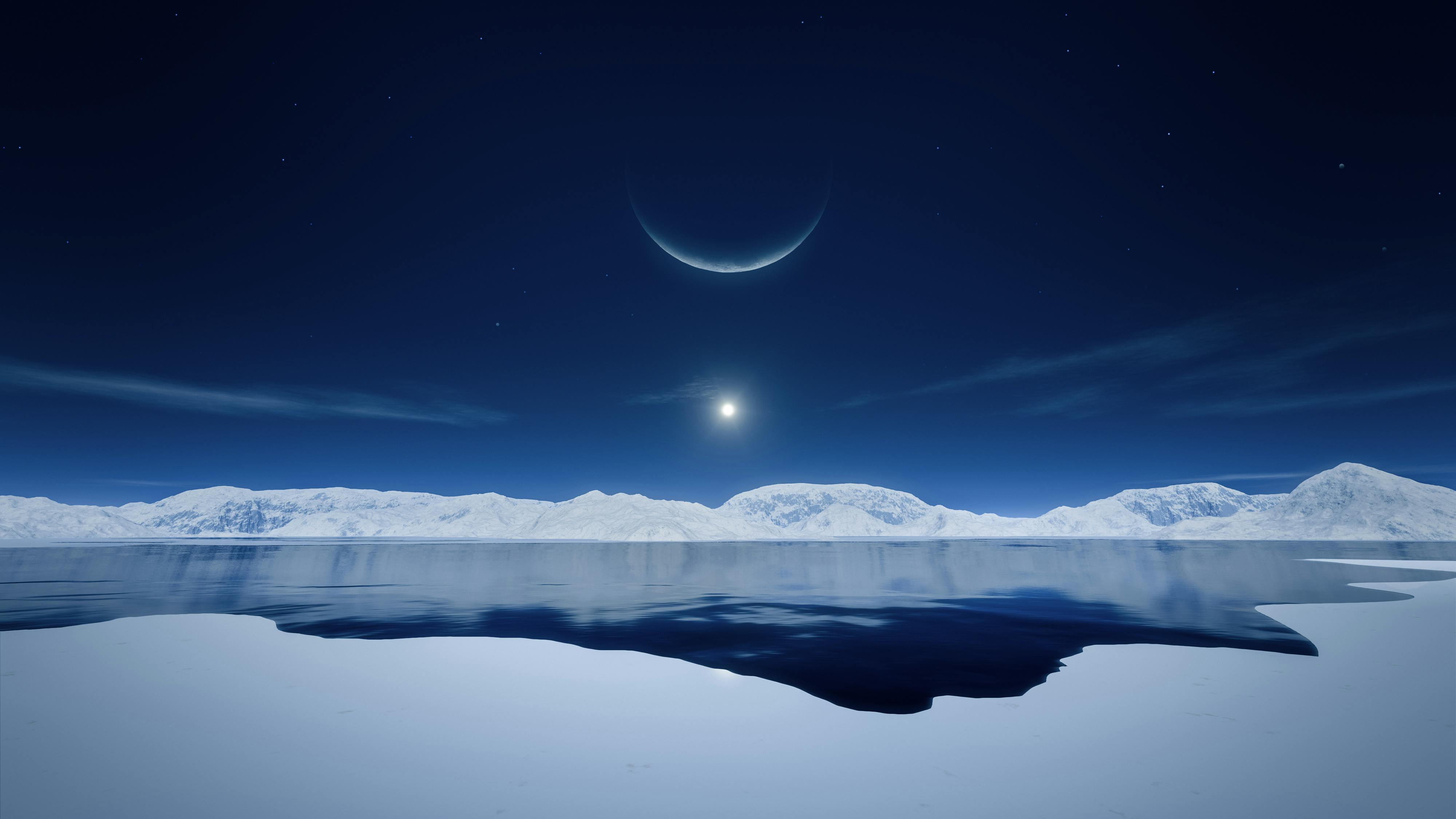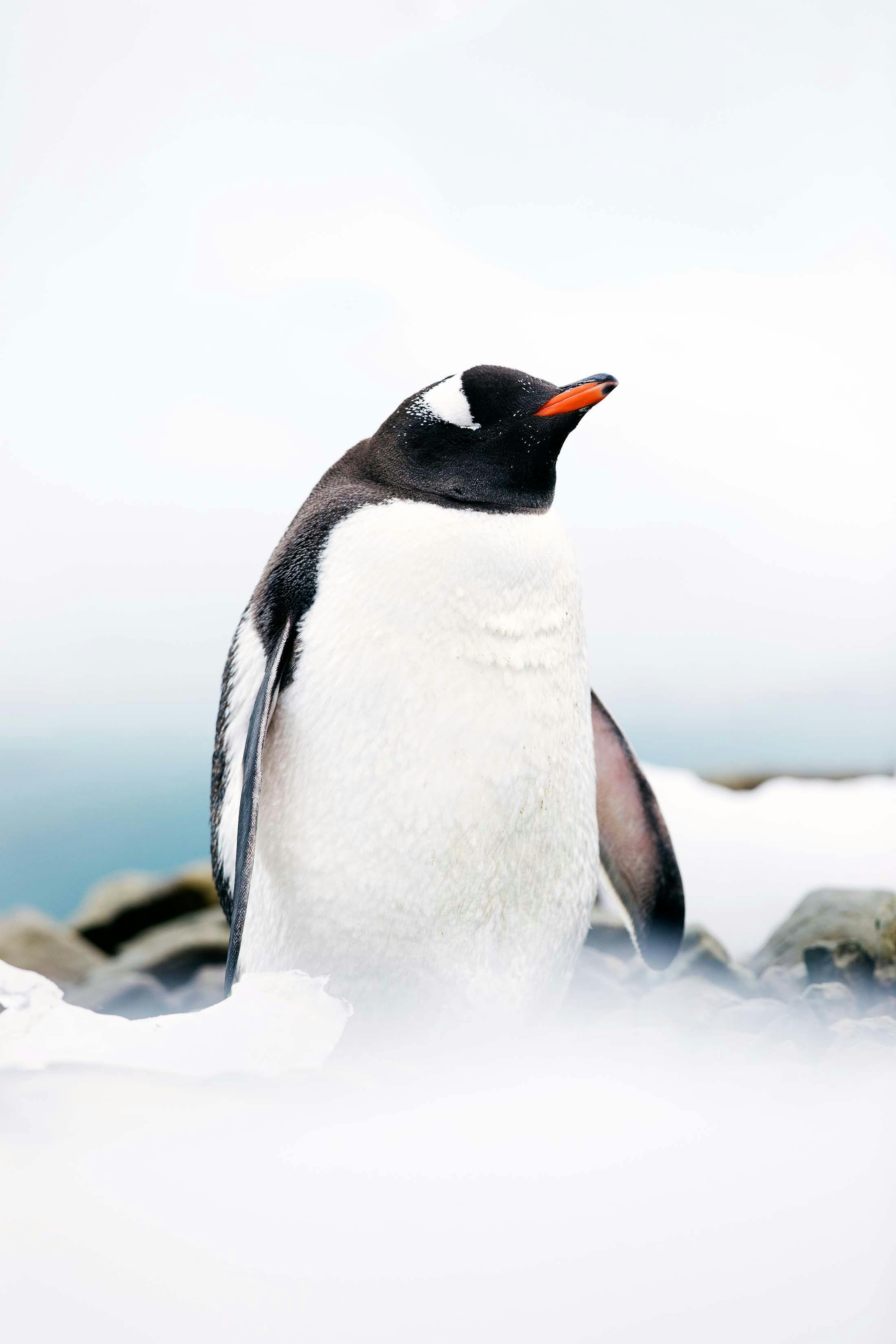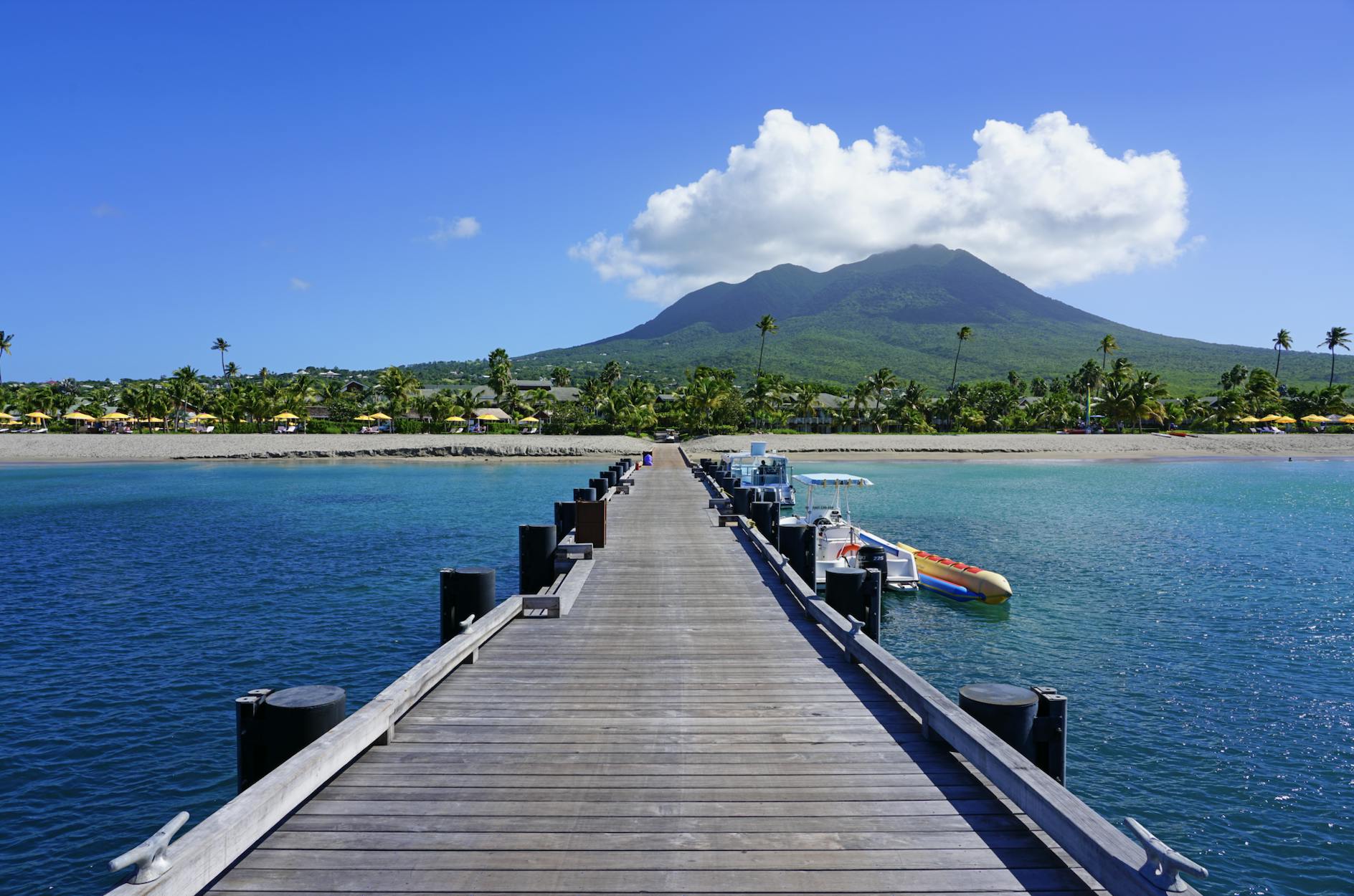Penguins in Antarctica: Types, Facts and How to See Them
“In Antarctica, penguins breed out in the open,” says Dr. Martin Renner, expedition ornithologist for Silversea. “They don’t hide in burrows. They are approachable. We always adhere to the recommended safe distances to not disturb them. They are great to watch.”
This is Renner’s 10th expedition to Antarctica, and he is still as fascinated by penguins as the wide-eyed visitors around him. His primary role: to educate guests on the life, anatomy and breeding cycles of the birds. His passion isinfectious.
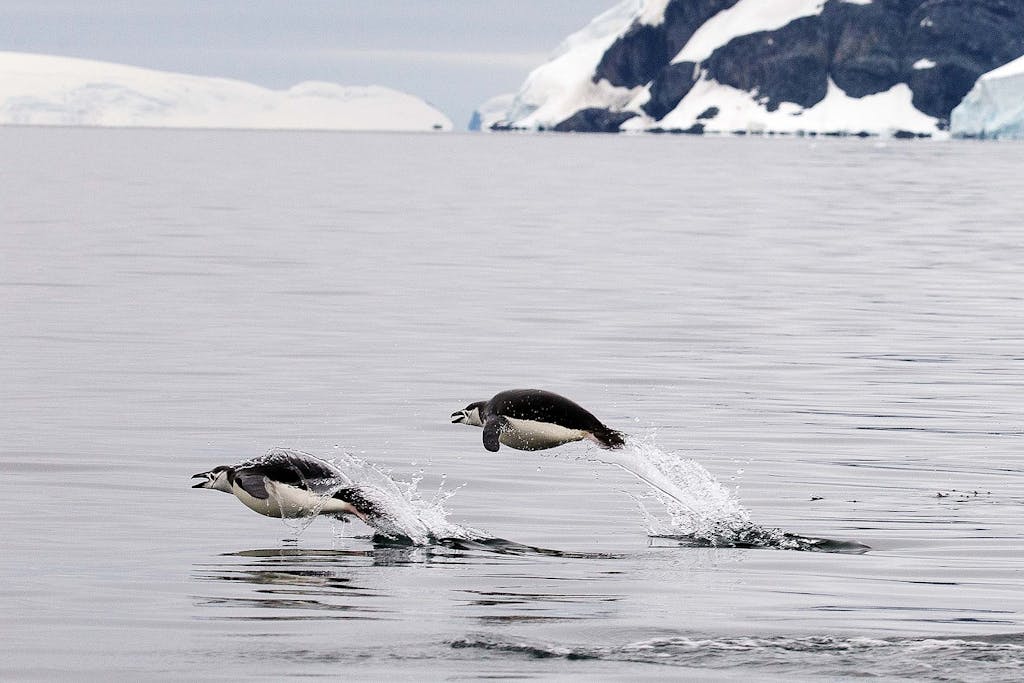
With this in mind, it is no wonder that I am standing with a beaming Renner at a Chinstrap breeding ground in the South Shetland Islands on the aptly named Half Moon Island. This ruggedly beautiful, crescent-shaped landscape is home to a colony of approximately a thousand Chinstraps.
It is February, which is late summer on the Antarctic Peninsula. Within the colony, penguin pairs —one male and one female— take turns looking after their chicks. Sharing these duties is standard behavior with all three species.
Chinstraps mainly lay two eggs per season, much like the Gentoos, so there are plenty of fluffy, gray mouths to feed here. Some chicks, around eight weeks old, are molting. It’s a frustrating period for them because while parents go out to sea foraging, the chicks stay behind. Molting is an uncomfortable and energy-extracting process.
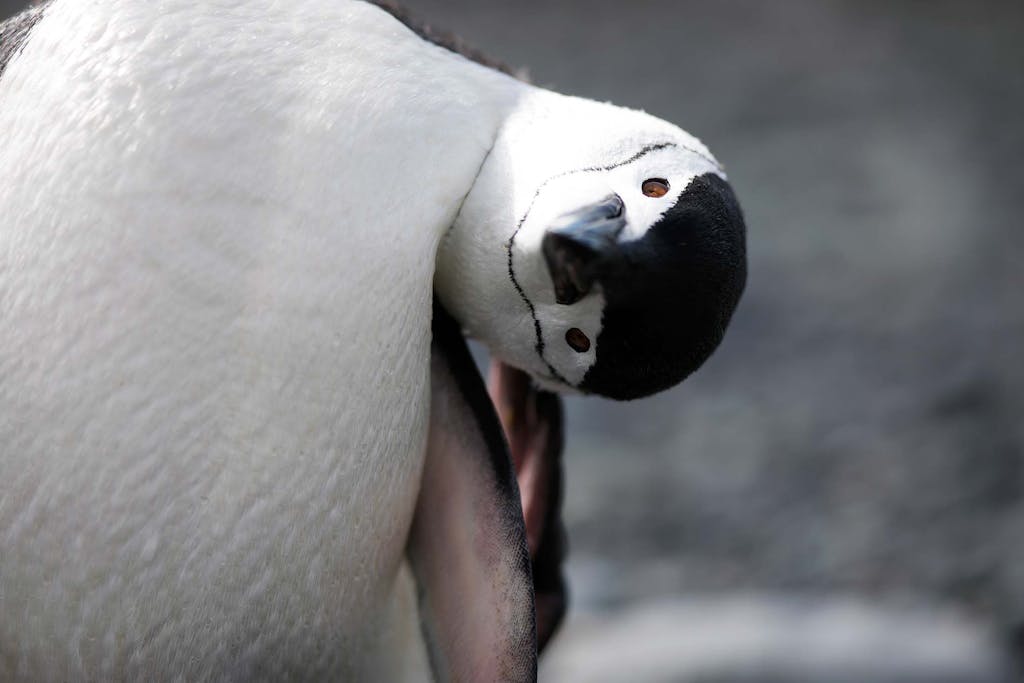
The regular expedition season runs from late November until early March. Throughout this time, you can see an essential part of the penguin lifecycle —from courtship to fledging— taking place. “Choosing when to travel is dependent on what one hopes to witness,” says Renner.
“The Antarctic penguins arrive early in spring, between September and October, to find their mate and establish a nest after spending the winter at sea. I like the early season. While eggs don’t look as cute as chicks, there are some birds still showing the full range of courtship behaviors like nest building, pebble stealing to build nests, and sometimes even mating.”
How many types of penguins are there in Antarctica?
You’ll find three main species of penguins in Antarctica: Adéle, Gentoo and Chinstrap penguins, collectively known as the brush-tails, or Pygoscelis. These three species are similar in size and body but differ in the coloration of the head.

The Adéle penguin lives in coastal areas; the other two species live inland. Penguins are one of the world’s smallest birds, some weighing as little as 3 or 4 pounds. They also are known for their ability to dive deeply to catch fish. It breeds the farthest south of all brush-tailed penguins. There aren’t many accessible Adélie colonies along the Peninsula, but the few we can see are huge.
“Adélies are the quintessential penguin,” Renner says. “Their eye is accentuated by a white eye-ring, allowing for all sorts of fancy facial expressions.”
Renner confesses that his favorite is the Chinstrap “for their simple elegance.” A band of black feathers from one side of the head to the other gives the species its name, but the configuration adds a puckish look to this species. Its bill is black and its eyes are ringed by black.
Gentoos are easy to recognize by their orange bills and white eye-patch that runs over the head. They are the most widespread species along the Peninsula and, therefore, virtually guaranteed. The Chinstrap has a white face and stands out, thanks to the dark line under the chin that suggested its name. The species lives mainly on the islands of the Scotia Arc made up of South Georgia, South Orkney, South Sandwich and the South Shetland Islands. They also thrive in a few areas along the Antarctic Peninsula.
Where to see Adelie penguins in Antarctica
The best place to see penguins in Antarctica also is at Cape Royds Station. This station is near the Ross Ice Shelf, one of the largest ice shelves in the world. You also can see Adelie penguins at McMurdo Station, Scott Base and Amundsen–Scott South Pole Station.
Where to see Gentoo penguins in Antarctica
The best place to see Gentoo penguins in Antarctica is at Cape Royds Station, which is near Ross Island and also home to Emperor penguin colonies. You also may Gentoos in the South Shetland Islands and King George Island.
Where to see Chinstrap penguins in Antarctica
The best place to see chinstraps penguins is at Cape Royds, which is located near Ross Island. This is one of the most popular places for tourists to visit in Antarctica.
Other types of penguins you may see
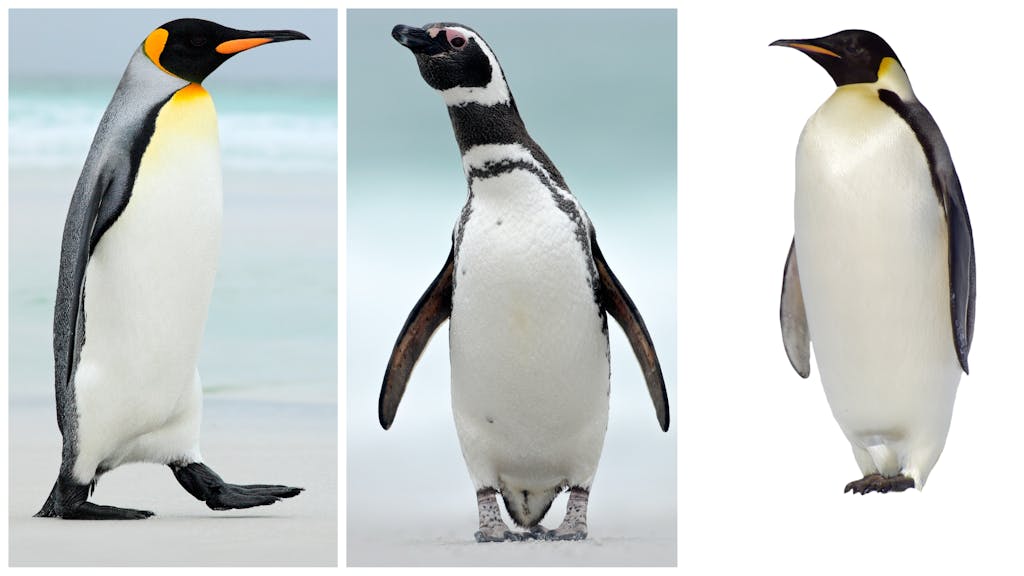
If you’re lucky, you may check off at least one more en route: the Magellanic penguin found in the waters of the Beagle Channel at the southern tip of South America. King Penguins, a species of the sub-Antarctic islands, live around the Falklands, South Georgia and Australia’s Macquarie Island. The Emperor, the largest of the penguins, typically breeds in the far south during winter. Although visitors are unlikely to encounter Emperor Penguins along the Peninsula during the summer, there is a colony at Snow Hill Island which is sometimes visited during a Silversea cruise.
When to see Antarctic penguins

The regular expedition season runs from late November until early March. Throughout this time, you can see an essential part of the penguin lifecycle — from courtship to fledging — taking place. “Choosing when to travel is dependent on what one hopes to witness,” says Renner.
“The Antarctic penguins arrive early in spring, between September and October, to find their mate and establish a nest after spending the winter at sea. I like the early season. While eggs don’t look as cute as chicks, there are some birds still showing the full range of courtship behaviors like nest building, pebble stealing to build nests, and sometimes even mating.”
How Chinstrap penguins chicks give chase
As we speak, quiet tapping begins in front of us. A Chinstrap chick asks for food from a parent while his fluffy gray sibling flops quietly on the ground next to the commotion. Renner has already briefed me that the constant tapping stimulates the regurgitation of food from the parent. The adult penguin ducks its head back and forth in avoidance before running away from the chick, who follows with pure determination.
“Feeding chases are unique and comical. They’re a joy to watch,” Renner says. One parent speedily pads around the muddy, guano-covered rookery. And, having spent several days at sea foraging food, the penguin returns to the colony, climbs the hill and looks for its hungry chicks. “But instead of feeding right away, it encourages its chick to chase it through the colony before finally regurgitating krill. It’s a bizarre behavior that helps reduce interference from the other chick and allows for fair food distribution.”
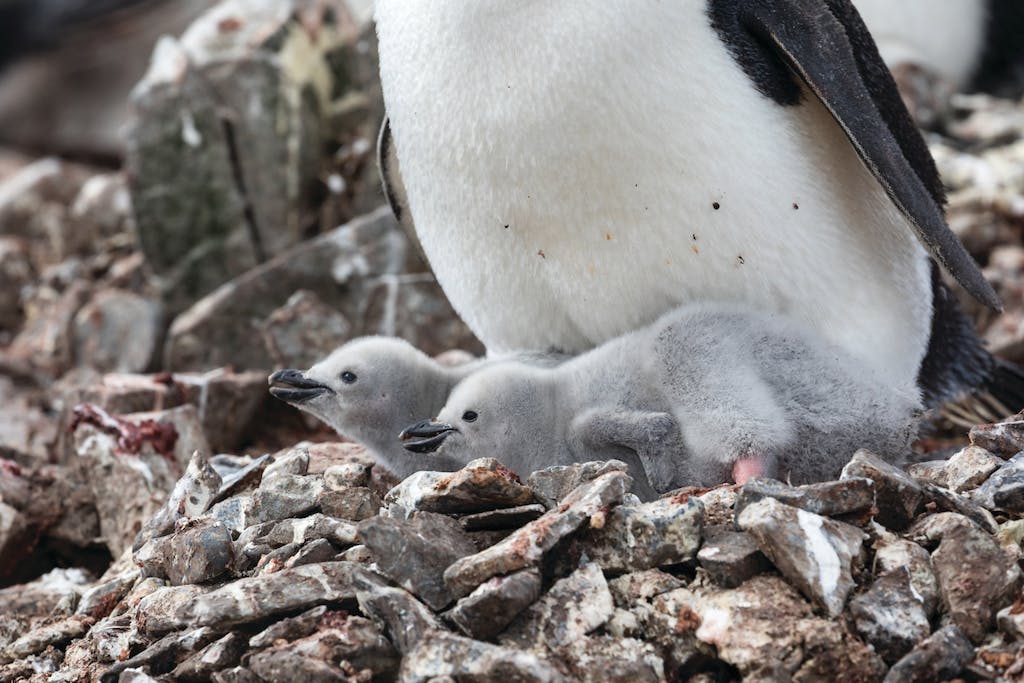
Eventually, the adult stops running to feed its baby. Both birds stand close, open-beaked as though embracing. I see the regurgitated pink krill passed from adult to chick. It is a beautiful moment.
“Good things happen for those who wait,” says Renner. “We are not going to see these behaviors every time. So stand or sit still for a while. Let the birds come up to you and check you out. When [you’re on land] there is human traffic around the colonies, spend extra time near the water and watch penguins jump ashore or head out to sea.”
How to capture penguins in a photograph
Although the International Association of Antarctic Tour Operator (IAATO) guidelines tell us to keep at least 5 meters to 10 meters (16 to 32 feet) from penguins and their colonies, the birds haven’t received the same briefing. For this reason, it is crucial to be aware of your surroundings.
“Give birds the right of way and avoid walking on their ‘highways,’ Renner says. “Move slowly, avoid sudden movements, don’t point at birds with walking poles, and follow the instructions of your expedition team. That’s the way to enjoy their natural behavior.”
Having spent years studying penguins, Renner has taken his fair share of photographs. He tells me it’s best to carry both a wide-angle lens for capturing the landscape of the whole colony and a telephoto lens between 200 and 600mm.
“Most important, whether using a smart-phone or digital SLR, is to get down low if the knees allow,” he adds. “Being eye-level with a penguin allows a deeper connection to the subject.”
Watching penguins in their natural environment and observing their natural behavior is lovely to watch. I hear other guests echoing the sentiment, vowing to come back with their children and grandchildren one day. That evening, as the Expedition Team and guests gather for our daily Recap and Briefing to review the day, Renner ends his presentation on penguin behavior with a touching thought towards the Expedition Leader.
“Thank you,” he says “for the best job in the world.”

On a roll? Learn how to film South Georgia’s king penguin colony.
Karen Edwardsi s an award-winning travel and lifestyle journalist and expedition guide from London. She is the sustainability editor at Wanderlust Travel Media. She specializes in indigenous culture, conservation, remote destinations, as well as ethical and responsible travel. She has contributed features to U.K. titles such as British Airways High Life, Grazia, Sunday Times Travel, In The Moment and more.



